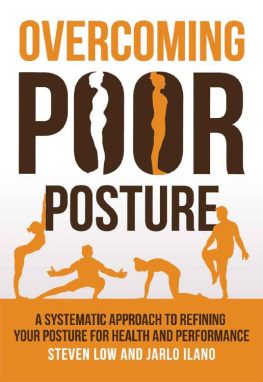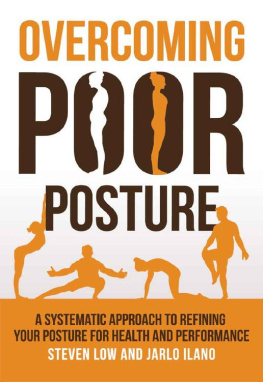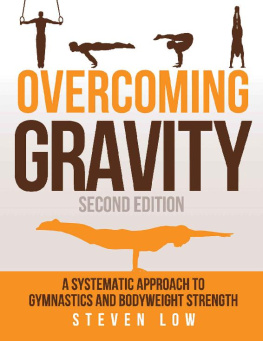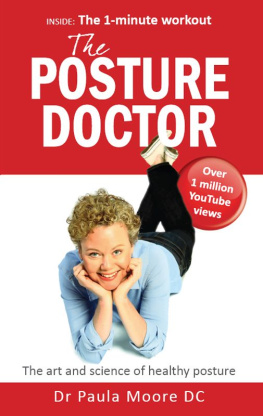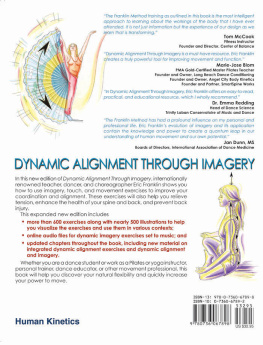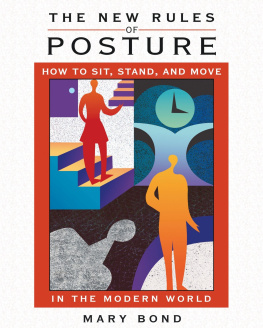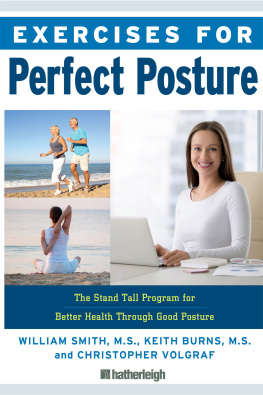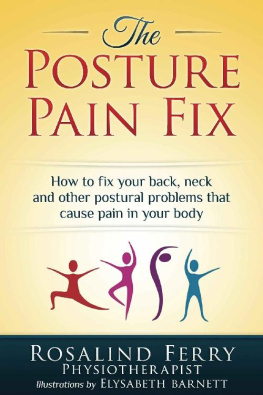
A SYSTEMATIC APPROACH TO REFINING
YOUR POSTURE FOR HEALTH AND PERFORMANCE
STEVEN LOW AND JARLO ILANO
Overcoming Poor Posture
Copyright 2017 by Steven Low and Jarlo Ilano
All rights reserved.
Published in Houston, Texas by Battle Ground Creative
First Edition
softcover ISBN: 978-1-947554-00-9
ebook ISBN: 978-1-947554-01-6
HEALTH & FITNESS / Exercise
Battle Ground Creative is a publishing company with an emphasis on helping first-time authors find their voice. Named after an obscure city in Washington State, we currently operate offices in Houston, Texas, and Princeton, New Jersey. For a complete title list and bulk order information, please visit www.battlegroundcreative.com.
The websites and references contained within this book are intended to serve as a resource with no guarantee expressed or implied as to the accuracy of their content.
Senior copyeditor: Jared Stump
Edited by: Jo Hsu
Proofreader: Andy Fossett
Cover design: Corinne Karl
Interior design and typeset: Katherine Lloyd
Models: Ryan Hurst and Alicia Nowak
CONTENTS
- Chapter 1
OVERVIEW AND PRACTICAL WAYS THIS BOOK CAN HELP YOU
P osture is one of the most misunderstood topics in both the fitness and medical worlds today. There are a lot of myths surrounding posture that are unhelpful and misleading, which results in a lot of wasted time and energy, as well as a lot of frustration. With all this misinformation, it is important to understand the mechanisms of posture within the body in order to look, feel, and perform better.

If there is one principle you must learn in fitness, it is that everything in the body reacts to the SAID principlespecific adaptation to imposed demand. The SAID principle shows us that when certain stimuli are applied to the body, it will adapt accordingly so that homeostasis is not disrupted. For example, if you perform resistance training with heavy weights, your body will react to this imposed demand with the specific adaptation of increasing bone density, increasing connective tissue integrity, increasing muscle mass, and gaining neurological adaptations to improve strength. Posture can be thought of as a similar process that responds to the imposed demands that you place on your body.
Traditionally, posture has been thought of as a static position. In fact, direct alignment of various bony landmarks on top of each other was considered to be optimal or good posture. These landmarks go from the ankles all the way up to the head. Linear positioning of these landmarks was often considered to be the best alignment. However, this has changed in recent years based on further research.
Posture is a very complex interplay between the neurological and musculoskeletal systems within the body, which all come together to make up a specific position. Some of the factors involved with modulating the interplay are habits, neurological reflexes, adaptations of the body, and time. Let me give you some examples to help you understand these points better:
Habits Habits are easy to understand. We often sleep the same way, brush our teeth when we get up and when we sleep, and shower at particular times. There are many more examples throughout a typical day. In regard to posture and alignment, the habits of certain postures can also be ingrained in the body. Those who had parents who frequently told them to sit up straight or stand up straight will more likely default to that habit, which was ingrained in them from a young age. Those who had military training where they had to stand at attention will often default to those habits. Individuals who sit for very long periods of time or have desk jobs will tend to slump forward with a craned neck.
Neurological Reflexes Have you ever watched someone start to fall asleep in a car or on a plane? If they are sitting up in the chair and start to drift off to sleep, their body will naturally start to sway as their consciousness sinks deeper into sleep. Oftentimes you will see the body start to lean one way or the other and start to fall. Inexplicably, they may jerk upright without even waking up. This is a neurological reflex the body has within itself that does not require any conscious effort and that keeps the body upright.
Adaptations in the Body When maintaining physiological processes, the body tends to self-regulate to restore equilibrium. In particular, the body likes to be at the lowest possible state of energy, much like atoms or any other type of high(er) energy objects. Humans love to relax. The lowest possible energy state of the body is the parasympathetic nervous system state: eating, relaxing, lying down, and sleeping. Likewise, hunching over and sagging requires the least energy output from the body. When the muscles of the body are not active, we sag or round our backs while the bones and ligaments support our weight. This pursuit of less effort is one of the driving factors of slumping over when sitting.
TimeTime is actually an interplay between habits and adaptations in the body. Specifically, in regards to posture, if you regularly sit at a computer desk or hunch over while studying, your body is going to try to minimize the work that it has to perform. Therefore, it will start tightening certain muscles and loosening other muscles to adapt to that specific posture. The time factor reminds you that it is not just specific exercises that affect your posture; everything else you do in the course of your day matters as well. Students and those with desk jobs often need to develop greater awareness than those with more activity in their lives.
As you can see, there is a lot of interplay between habits, neurological reflexes, and adaptations in the body that affects each individuals posture.
Since neurological reflexes are mostly out of our conscious control, we will focus on habit-building to correct any potential issues that require modification, and mindfulness to counter any potential issues with adaptations in the body. Habit-building and mindfulness will be critical for obtaining the benefits of posture and alignment.
If you have poor posture and you move your body into what is generally assumed to be good posture, you will find it uncomfortable. This is because your body has adapted to your poor posture, making it feel normal when it actually is not. Your default posture literally becomes a habit, just like smoking, binge eating, not flossing, or any other daily activity. Its very hard to break bad habits, especially if some time has passed and your body has adapted.
Subsequent chapters of this book will cover other discussions surrounding the history of postural correction, pain, the meaning of posture, and muscular tightness.
Next page
